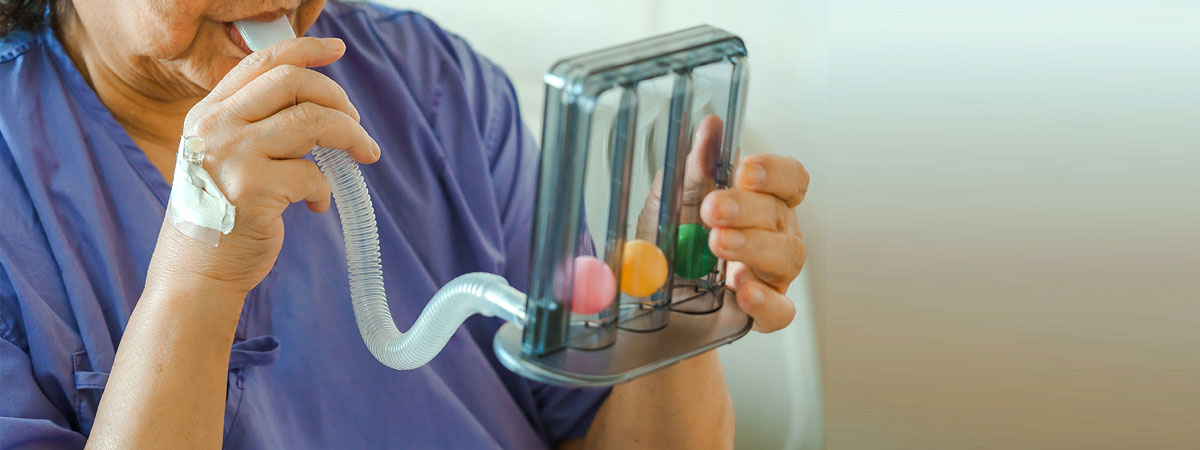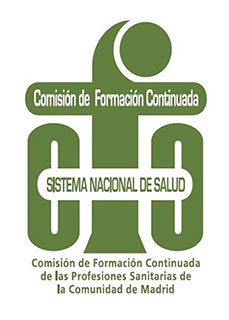Course in Respiratory Physiotherapy in Post-COVID Patients

Society requires professional physiotherapists specialized in respiratory physiotherapy
The global COVID-19 pandemic has left people with acute and chronic respiratory consequences, in need of respiratory rehabilitation treatment to accelerate their recovery, or to minimize the negative effects on the loss of quality of life.
It is known that approximately 12% of patients during the start of the pandemic would require admission to the Intensive Care Unit due to their major respiratory complications. Even though this percentage has decreased over the course of the disease, many of them will remain with respiratory sequelae.
Curriculum
Respiratory Physiotherapy in Post-COVID Patients
Knowledge of pulmonary, muscular and functional involvement
Review of tests and analysis of results: RX, CT, Spirometry, Pulse oximetry, Echocardiogram, Walk test 6 min.
Knowledge of the COVID-19 patient in the Intensive Care Unit
Mechanical ventilation, bag valve mask, intubation systems and ICU operation.
Physiotherapy examination of the post-COVID-19 patient
Exploration and evaluation of lung capacities and mobility of the rib cage. Examination and evaluation of the muscular state of the upper and lower limbs. Exploration and Evaluation of aerobic capacity versus physical activity.
Physiotherapy treatment for post-Covid-19 patients
Pulmonary treatment program and respiratory muscles. Functional improvement and muscle strengthening program.
Professors
 Alfonso Montero Pacios
Profesor
Director del programa. Diplomado en Fisioterapia. Máster universitario en medicina respiratoria. Máster universitario en Gestión y planificación para directivos de salud. Lugar de trabajo Hospital Clínico San Carlos. Madrid. Rehaliza Health Solutions. Madrid.
Alfonso Montero Pacios
Profesor
Director del programa. Diplomado en Fisioterapia. Máster universitario en medicina respiratoria. Máster universitario en Gestión y planificación para directivos de salud. Lugar de trabajo Hospital Clínico San Carlos. Madrid. Rehaliza Health Solutions. Madrid.
 Myriam Calle Rubio
Profesora
Licenciada en Medicina. Especialidad Neumología. Lugar de trabajo: Hospital Clínico San Carlos de Madrid. Profesor asociado de Medicina de la Universidad Complutense de Madrid. Autora de más de 200 publicaciones en libros o revistas científicas, e investigadora en más de 80 ensayos clínicos multicéntricos, principalmente en el área de EPOC, asma y VMNI.
Myriam Calle Rubio
Profesora
Licenciada en Medicina. Especialidad Neumología. Lugar de trabajo: Hospital Clínico San Carlos de Madrid. Profesor asociado de Medicina de la Universidad Complutense de Madrid. Autora de más de 200 publicaciones en libros o revistas científicas, e investigadora en más de 80 ensayos clínicos multicéntricos, principalmente en el área de EPOC, asma y VMNI.
 Begoña Morató Bellido
Profesora
Licenciada en Medicina. Especialidad medicina Intensiva. Lugar de trabajo: Hospital Universitario Sanchinarro HM. Madrid. Dedicación asistencial en UCI de más de 30 años.
Begoña Morató Bellido
Profesora
Licenciada en Medicina. Especialidad medicina Intensiva. Lugar de trabajo: Hospital Universitario Sanchinarro HM. Madrid. Dedicación asistencial en UCI de más de 30 años.
More Academic Info
Aimed at:
Objectives
- Know and know how to interpret all the medical diagnostic tests used to assess the post-COVID-19 pulmonary status. Know all the elements of therapy present in the Intensive Care Unit and that are likely to be used by patients with pulmonary involvement due to COVID-19.
Methodology
- Face-to-face workshop with short practical exercises with teaching material.
- Teacher-student and student-to-student interaction is one of the axes of the course, as it is a face-to-face workshop with a reduced number of students for this purpose, with interaction between teachers and students, and between them in the practical workshop.
- Interactive tutorials by email: Students will have the possibility to get their questions answered by email, so that they can reinforce their face-to-face seminars.
- Practical demonstration by teachers.
- Student activity and work in the practice room.
- Practice among students on physical therapist examination and treatment.


